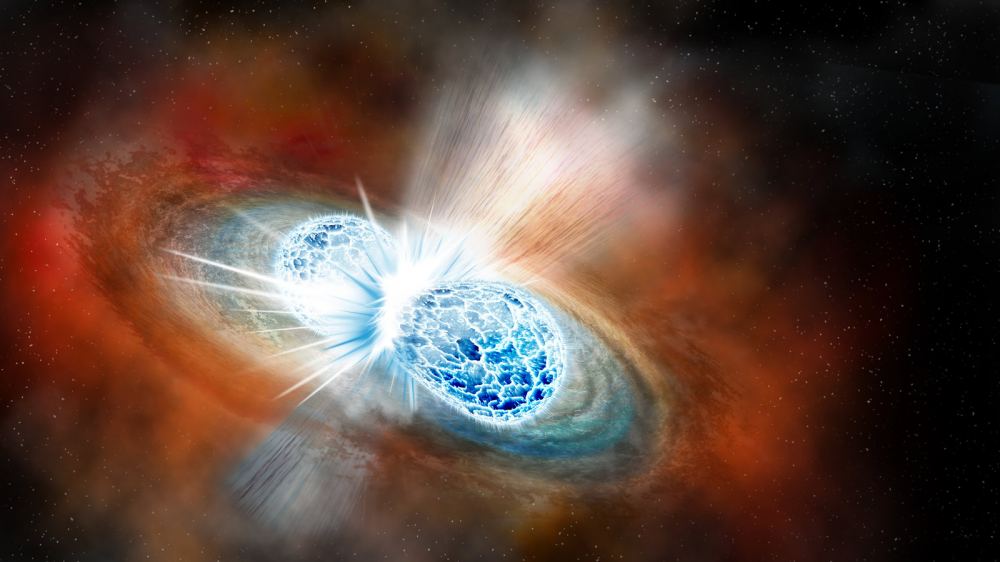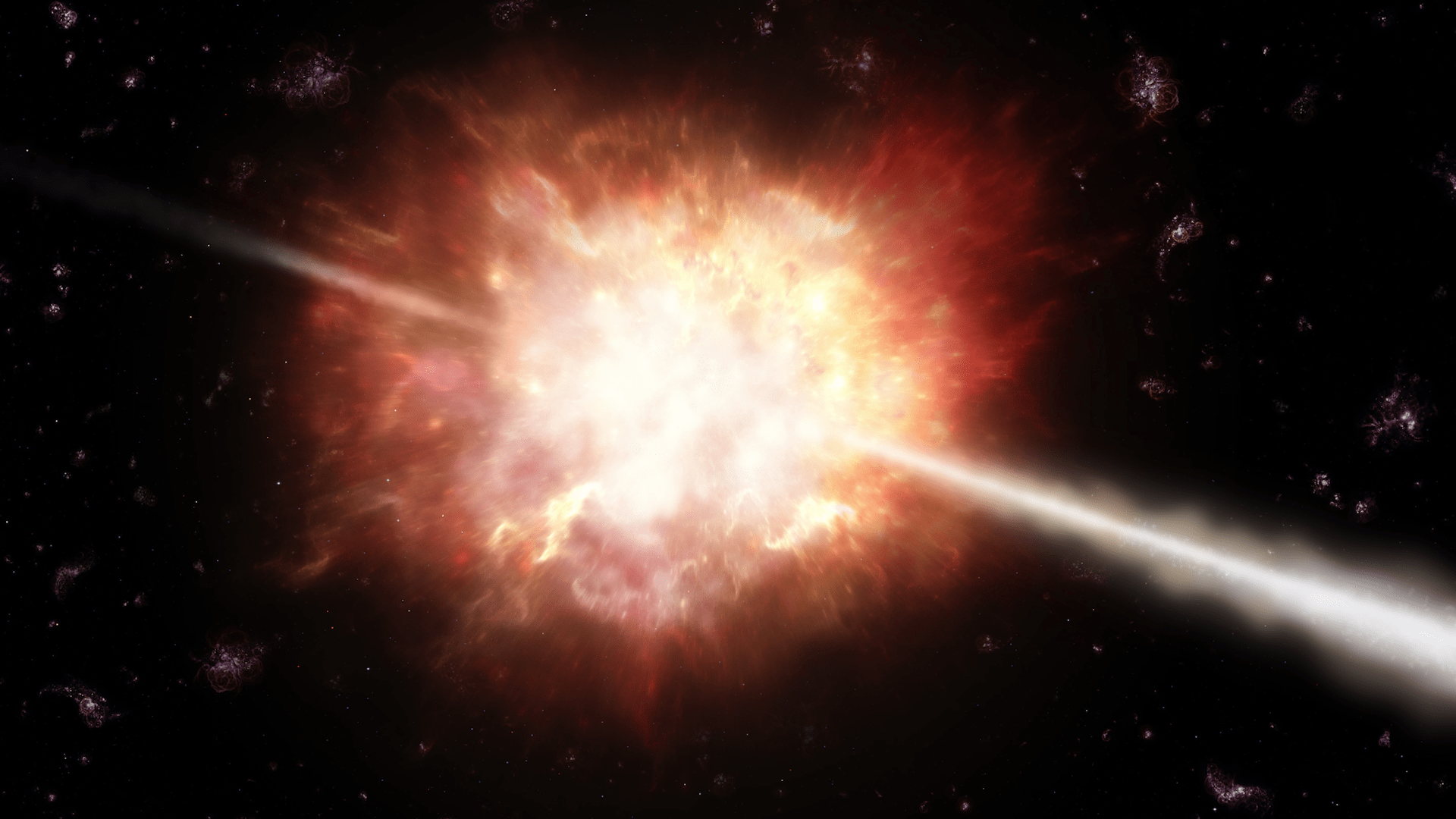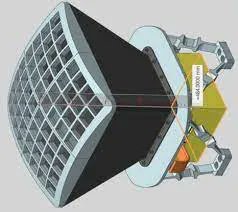Way out in the universe, a long time ago, a proto-magnetar was born. The birth was heralded by a gamma-ray burst (GRB), followed by a blast of strange emissions. Astronomers once assumed that GRBs like this came from black hole births. However, observations of the new object by astronomers in England show there’s more than one way to cause a GRB. And, there’s more than one type of GRB.
Continue reading “Gamma-ray Bursts Don’t Always Signal the Birth of a Black Hole, Sometimes It’s Just a New Neutron Star”Astronomers Just saw the Most Powerful Gamma-ray Burst Ever Recorded
Gamma-ray bursts (GRBs) are one of the most mysterious transient phenomena facing astronomers today. These incredibly energetic bursts are the most powerful electromagnetic events observed since the Big Bang and can last from a few milliseconds to many hours. Whereas longer bursts are thought to occur during supernovae, when massive stars undergo gravitational collapse and shed their outer layer to become black holes, shorter events have also been recorded when massive binary objects (black holes and neutron stars) merge.
These bursts are characterized by an initial flash of gamma rays and a longer-lived “afterglow” typically emitted in X-ray, ultraviolet, radio, and other longer wavelengths. In the early-morning hours on October 14th, 2022, two independent teams of astronomers using the Gemini South telescope observed the aftermath of a GRB designated GRB221009A. Located 2.4 billion light-years away in the Sagitta constellation, this event was perhaps the closes and most powerful explosion ever recorded and was likely triggered by a supernova that gave birth to a black hole.
Continue reading “Astronomers Just saw the Most Powerful Gamma-ray Burst Ever Recorded”A Black Hole can Tear a Neutron Star Apart in Less Than 2 Seconds

Almost seven years ago (September 14th, 2015), researchers at the Laser Interferometer Gravitational-wave Observatory (LIGO) detected gravitational waves (GWs) for the first time. Their results were shared with the world six months later and earned the discovery team the Noble Prize in Physics the following year. Since then, a total of 90 signals have been observed that were created by binary systems of two black holes, two neutron stars, or one of each. This latter scenario presents some very interesting opportunities for astronomers.
If a merger involves a black hole and neutron star, the event will produce GWs and a serious light display! Using data collected from the three black hole-neutron star mergers we’ve detected so far, a team of astrophysicists from Japan and Germany was able to model the complete process of the collision of a black hole with a neutron star, which included everything from the final orbits of the binary to the merger and post-merger phase. Their results could help inform future surveys that are sensitive enough to study mergers and GW events in much greater detail.
Continue reading “A Black Hole can Tear a Neutron Star Apart in Less Than 2 Seconds”The Gamow Explorer Would be a new Gamma-ray Observatory to Search for the First Stars in the Universe… as They Explode
Gamma rays are useful for more than just turning unassuming scientists into green-skinned behemoths. They can also shine a light on the deaths of some of the earliest stars in the universe. More accurately, they are some of the light caused by the deaths of the earliest stars in the universe. Now, a team of scientists led by Nicholas White of George Washington University, and formerly of NASA’s Goddard Space Flight Center, has proposed an observatory mission that would scan the sky for evidence of Gamma-ray bursts (GRBs) and use them to understand the early universe.
Continue reading “The Gamow Explorer Would be a new Gamma-ray Observatory to Search for the First Stars in the Universe… as They Explode”Finally an Answer to why Gamma Rays are Coming From Seemingly Empty Space
Gamma rays strike Earth from all directions of the sky. Our planet is bathed in a diffuse glow of high-energy photons. It doesn’t affect us much, and we don’t really notice it, because our atmosphere is very good at absorbing gamma rays. It’s so good that we didn’t notice cosmic gamma rays until the 1960s when gamma-ray detectors were launched into space to look for signs of atomic weapons tests. Even then, what we noticed were intense flashes of gamma rays known as gamma ray bursts.
Continue reading “Finally an Answer to why Gamma Rays are Coming From Seemingly Empty Space”Astronomers Locate the Source of High-Energy Cosmic Rays
Roughly a century ago, scientists began to realize that some of the radiation we detect in Earth’s atmosphere is not local in origin. This eventually gave rise to the discovery of cosmic rays, high-energy protons and atomic nuclei that have been stripped of their electrons and accelerated to relativistic speeds (close to the speed of light). However, there are still several mysteries surrounding this strange (and potentially lethal) phenomenon.
This includes questions about their origins and how the main component of cosmic rays (protons) are accelerated to such high velocity. Thanks to new research led by the University of Nagoya, scientists have quantified the amount of cosmic rays produced in a supernova remnant for the first time. This research has helped resolve a 100-year mystery and is a major step towards determining precisely where cosmic rays come from.
Continue reading “Astronomers Locate the Source of High-Energy Cosmic Rays”Exploding Material From a Gamma-ray Burst Scrambled Nearby Magnetic Fields
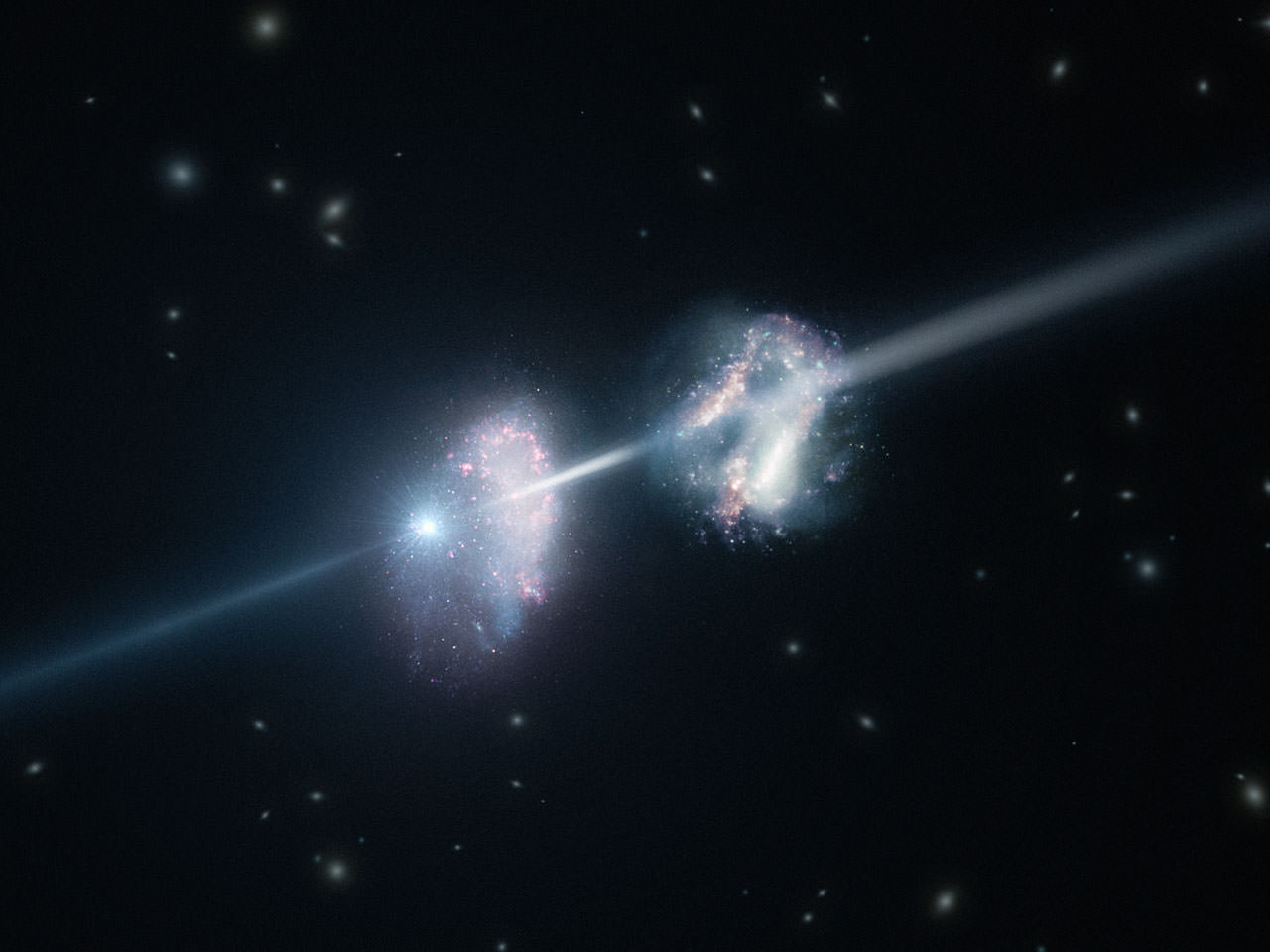
A team of astronomers has found that giant, organized magnetic fields can help drive some of the most powerful explosions in the universe. But when all is said and done, the shock wave from that blast scrambles any magnetic fields in a matter of minutes.
Continue reading “Exploding Material From a Gamma-ray Burst Scrambled Nearby Magnetic Fields”New Simulation Shows Exactly What’s Happening as Neutron Stars Merge
Neutron stars are the remnants of massive stars that explode as supernovae at the end of their fusion lives. They’re super-dense cores where all of the protons and electrons are crushed into neutrons by the overpowering gravity of the dead star. They’re the smallest and densest stellar objects, except for black holes, and possibly other arcane, hypothetical objects like quark stars.
When two neutron stars merge, we can detect the resulting gravitational waves. But some aspects of these mergers are poorly-understood. One question surrounds short-lived gamma-ray bursts from these mergers. Previous studies have shown that these bursts may come from the decay of heavy elements produced in a neutron star merger.
A new study strengthens our understanding of these complex mergers and introduces a model that explains the gamma rays.
Continue reading “New Simulation Shows Exactly What’s Happening as Neutron Stars Merge”It Takes Two Stars to Make a Gamma Ray Burst
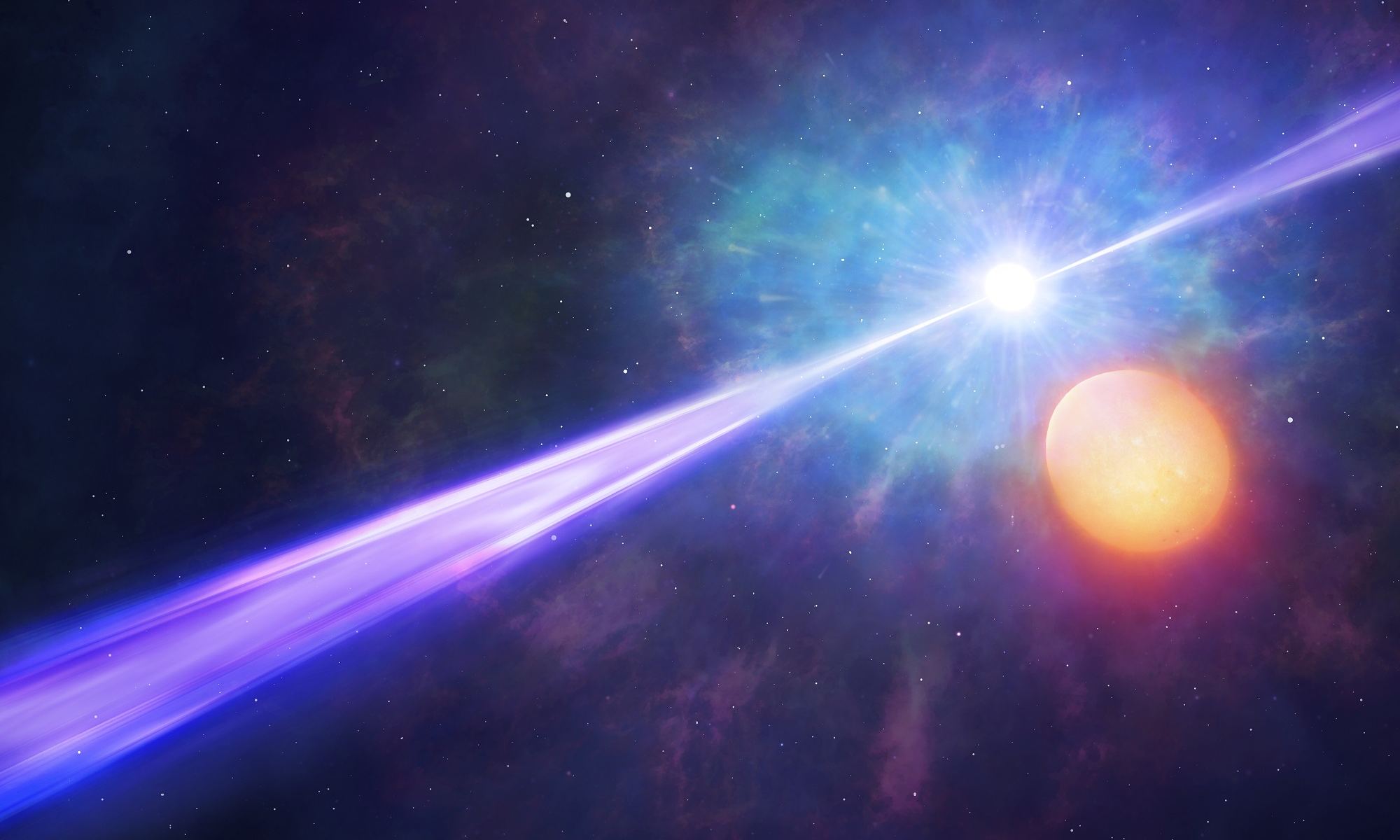
In 1967, NASA scientists noticed something they had never seen before coming from deep space. In what has come to be known as the “Vela Incident“, multiple satellites registered a Gamma-Ray Burst (GRB) that was so bright, it briefly outshined the entire galaxy. Given their awesome power and the short-lived nature, astronomers have been eager to determine how and why these bursts take place.
Decades of observation have led to the conclusion that these explosions occur when a massive star goes supernova, but astronomers were still unsure why it happened in some cases and not others. Thanks to new research by a team from the University of Warwick, it appears that the key to producing GRBs lies with binary star systems – i.e. a star needs a companion in order to produce the brightest explosion in the Universe.
Continue reading “It Takes Two Stars to Make a Gamma Ray Burst”Hubble Observes the Most Powerful Gamma Ray Burst Ever Detected
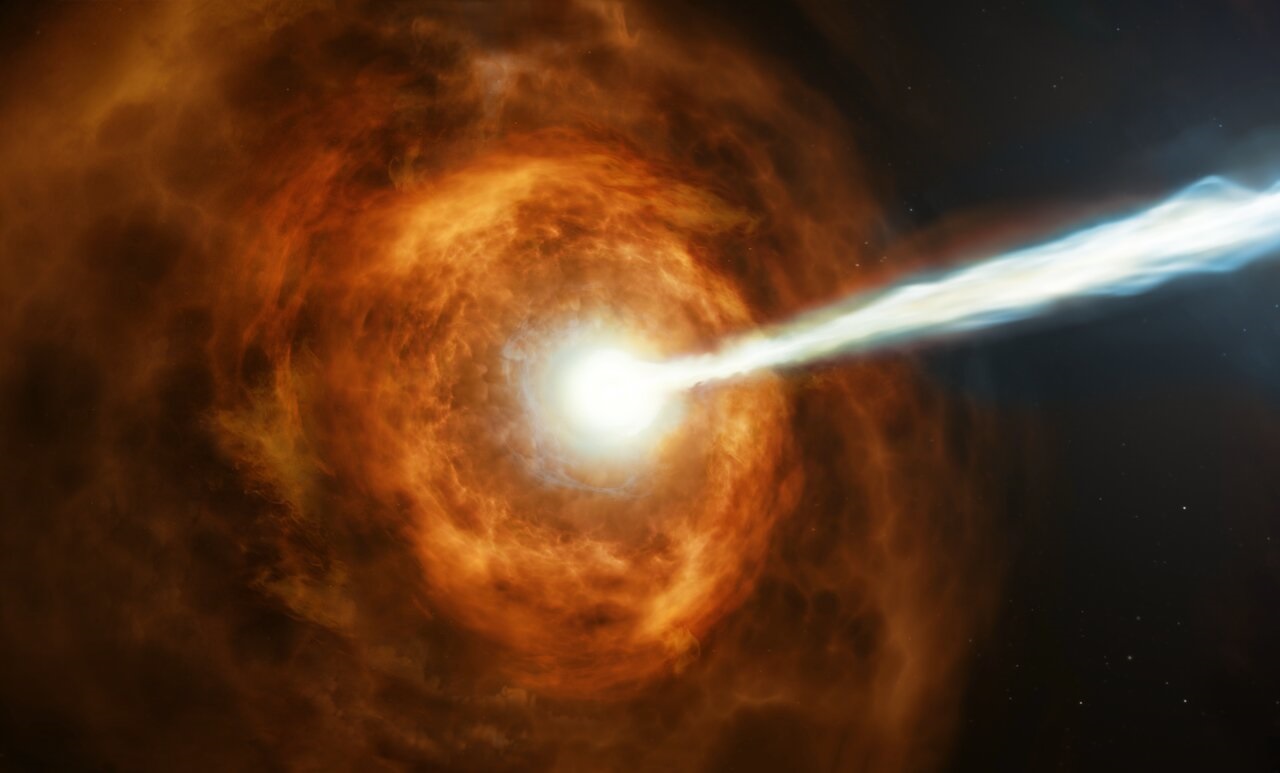
Gamma-ray bursts (GRBs) are one of the most energetic phenomena in the Universe, and also one of the least researched. These explosions of energy occur when a massive star goes supernova and emits twin beams of gamma rays that can be seen billions of light-years away. Because they are closely tied with the formation of black holes, scientists have been eager to study this rare occurrence in greater detail.
Unfortunately, few opportunities for this have occurred since GRBs are very short-lived (lasting for just seconds) and most have happened in distant galaxies. But thanks to the efforts using a suite of telescopes, astronomers were able to spot a GRB (designated GRB 190114C) back in January of 2019. Some of the radiation from this GRB was the highest energy ever observed, making this a milestone in the history of astronomy.
Continue reading “Hubble Observes the Most Powerful Gamma Ray Burst Ever Detected”
